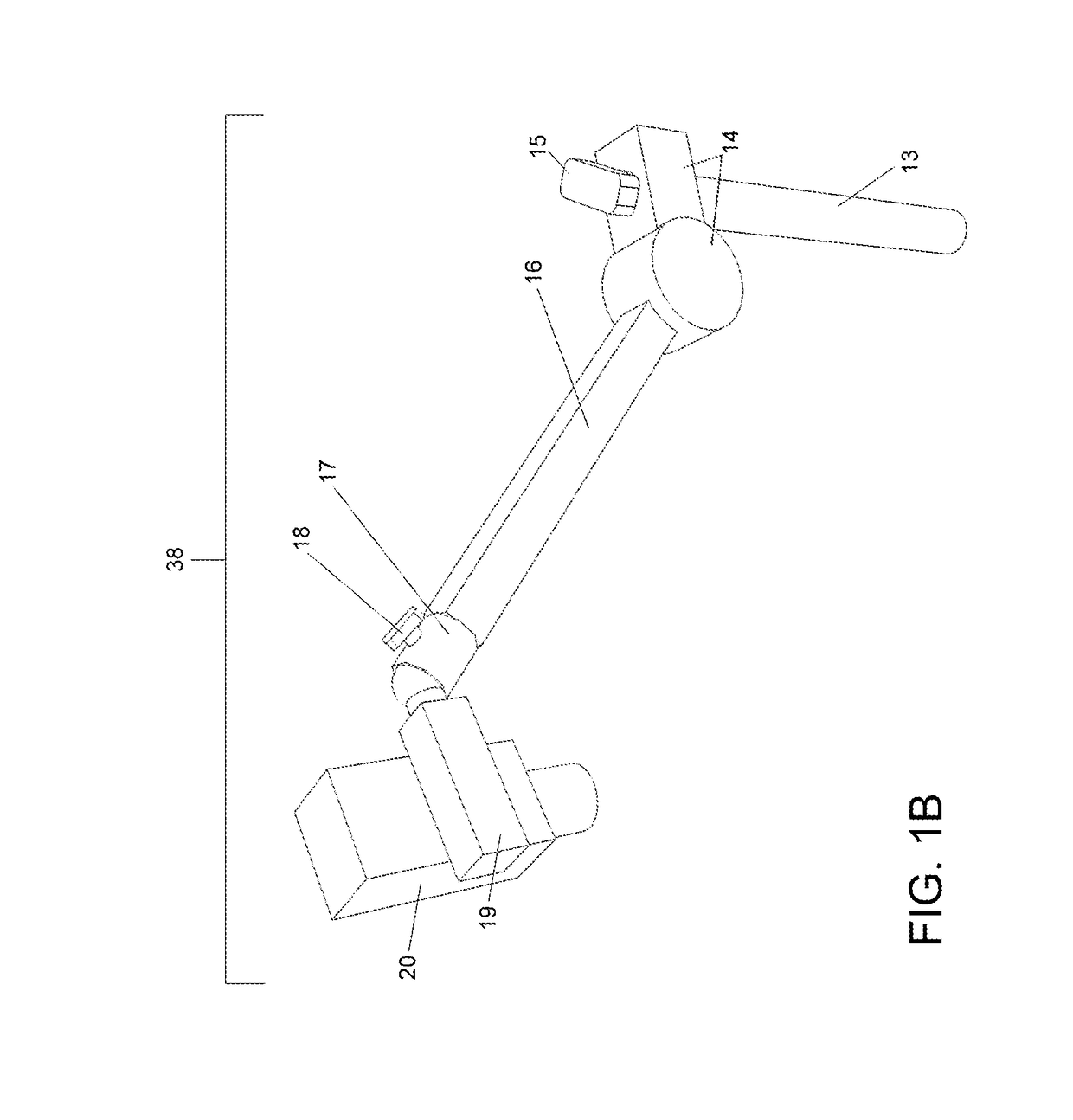Animation stand with multiple axis camera support
a technology of multiple axis and camera support, which is applied in the direction of projectors, camera body details, instruments, etc., can solve the problems of safety hazards, two devices consume excessive space, and it takes longer to set up equipmen
- Summary
- Abstract
- Description
- Claims
- Application Information
AI Technical Summary
Benefits of technology
Problems solved by technology
Method used
Image
Examples
first embodiment
[0058]The animation stand is operated by an animator who sits or stands facing the front edge of base 10 (the edge nearest registration pegs 11). To create two-dimensional animation, the animator positions camera support assembly 38 so that the camera is aimed down toward base 10 and stage panel 12 (FIG. 1A).
[0059]The animator adjusts camera support assembly 38 using the following steps. First, turn knob 15 counterclockwise to loosen it, then rotate rotary hinge 14 around the vertical axis of vertical arm 13 so that camera 20 is centered above stage panel 12, then tighten knob 15 to lock said camera. Second, use rotary hinge 14 to adjust the angle of the horizontal arm 16 so that camera 20 is the desired height above stage panel 12. Third, turn knob 18 counterclockwise to loosen articulating joint 17 around camera support arm 19, allowing said camera support arm to be rotated through all axes (X, Y and Z) around the point where said camera support arm intersects with said articulati...
PUM
 Login to View More
Login to View More Abstract
Description
Claims
Application Information
 Login to View More
Login to View More - R&D
- Intellectual Property
- Life Sciences
- Materials
- Tech Scout
- Unparalleled Data Quality
- Higher Quality Content
- 60% Fewer Hallucinations
Browse by: Latest US Patents, China's latest patents, Technical Efficacy Thesaurus, Application Domain, Technology Topic, Popular Technical Reports.
© 2025 PatSnap. All rights reserved.Legal|Privacy policy|Modern Slavery Act Transparency Statement|Sitemap|About US| Contact US: help@patsnap.com



